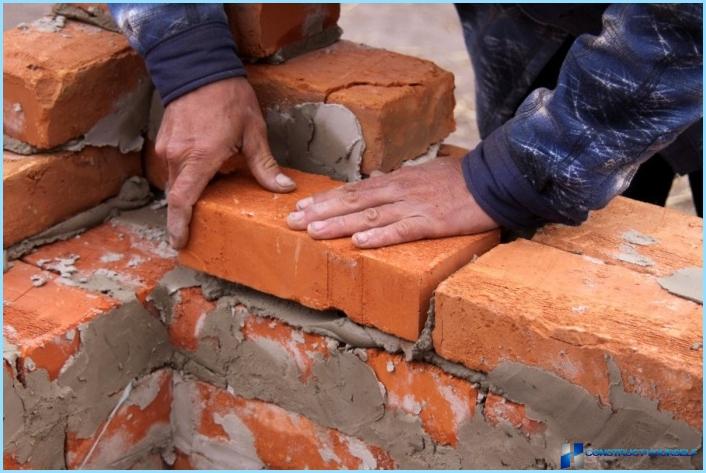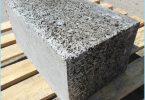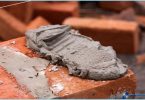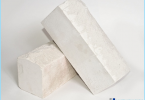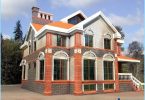The contents
The basis of mortar are the binder components and aggregate. Due to these components of the composition, the mixture is able to firmly fix the bricks in the same position. With a sufficient level of viscosity of the binding capacity of the mass remain unchanged for many decades.
The main components of the mixture, as a rule, are:
- sand (filler);
- cement or lime (binder component).
To ready weight met all the requirements, the sand must be thoroughly clean from various debris. Safe can be considered a mixture, based solely on pure sand.
Mixing mortar for brick masonry – it is extremely serious. If the cooking process would be violated any regulations, we can not guarantee the durability and safety of construction.
For clarity, for example, in ancient buildings and temples were used unusual solutions, whose composition is still obscure. Many of these buildings have stood for many hundreds, if not thousands of years. Of course, to achieve such strength, you must devote sufficient time to creating a solution.
The rules of cooking ↑
To answer the question: how to mix mortar for bricklaying, you first need to read some rules.
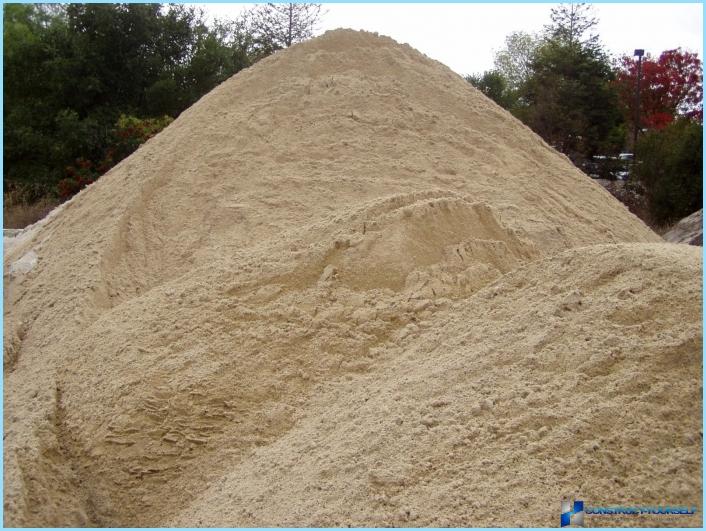
- The sand must be carefully sifted before mixing. Only clean sand is perfect for the role of placeholder, which, together with the astringent component will be the perfect blend.
- The amount added to the cement mortar determines the mobility and elasticity of the mixture. Usually, different situations require different number of components in unique proportions.
- Filler mixtures can be not only sand, but also lime or clay. The plasticity of this mass is greatly increased, and the process of using the solution much easier. However, this mixture is not recommended to use, for example, when laying special bricks with cavities. In this case, the mixture will flow in a cavity, which, of course, will reduce the insulation strength and other characteristics of buildings.
During solution preparation should not forget that without responsibility will not work to achieve a good result. In case of failure, it is recommended to get rid of the bad mixture and make a new solution.
Species ↑
Before proceeding to a final decision: how to make mortar for bricklaying, you need to deal with its variants. Each type of compound usually has its own characteristics and unique requirements on the use of.
Total, there are three types of mortar for masonry:
- lime;
- cement;
- lime-cement.
A mixture of lime has a minimum strength indicator, however, demonstrates impeccable warmth and plasticity. To prepare this solution from:
- burnt lime (crushed);
- the limy test;
- purified sand.
The cement mixture is composed of two main components: sand and cement. Such a mass is too cold, has minimal mobility and, regardless of the type of cement is too rigid.
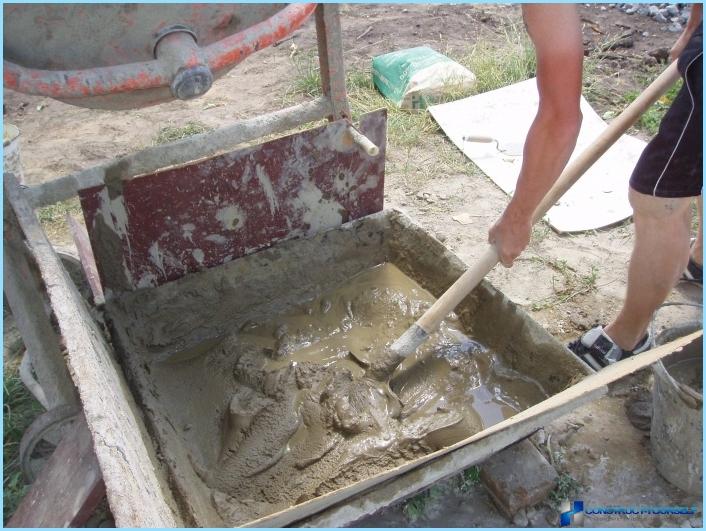
Lime-cement mass is a mixture of cement and lime paste. This compound shows excellent ductility and strength. The solution is considered the best and is suitable for use in different situations.
Marking ↑
Often the solution for brick masonry is divided by grades. There are the following markings:
- 100, 150, 200 are used in special works;
- 4, 10, 25, 50, 75 – most popular in construction;
- 0, 2 – rarely find the scope of.
The importance of labeling is determined that the assigned number directly indicates the strength of the hardened mass. Tested the strength by the powerful compression of cubes of a dry mixture.
Also, the marking process is determined by the degree of mobility of the mixture. The calculations are performed through the immersion of a special cone into the prepared ground – the deeper he goes, the more mobile is the mixture.
For hollow brick, the optimal level of mobility is 7-8. Solid brick require greater mobility, equal 9-10.
In addition, it is necessary to consider the temperature of the air during construction, at a high level which may require a unique solution with much greater mobility equal to 12-14.
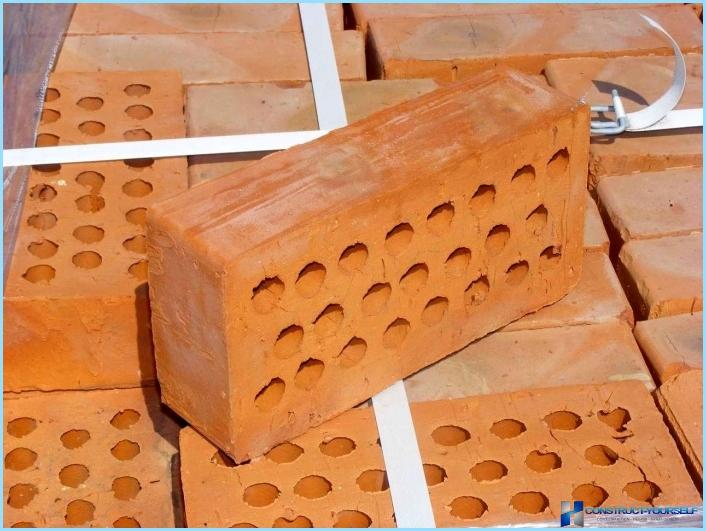
Of course, each individual case may require a unique motility structure. To prevent any errors related to this, it is recommended to use a mixture of the average mobility (10-12).
The proportions and composition ↑
The mixture is usually prepared depending on the circumstances of construction. The proportions are determined by the soil type, height and types of buildings.
In the construction of single-storey buildings used lime mortar with particularly high rates of lightness and stickiness. In mixing such a mass of used limestone and sand in the ratio 1:4.
Cement mortar used when laying thickness is more than 0.25 meters. In this mixture the main components are sand and cement in different proportions (3:1-6:1). The ratio of the components in this mixture depends entirely on the technical characteristics of erecting buildings.
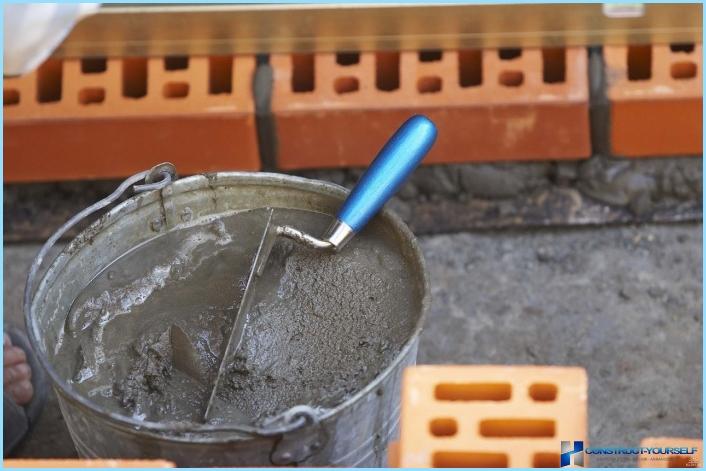
It is worth noting that all the knowledge about how to make mortar for bricklaying, will come with experience.
Kneading a mass of masonry occurs in two stages:
- mix all dry ingredients mixture;
- the net is filled with only cold water.
Required for solution of 0.8 part of liquid to one part cement. This ratio is ideal for any sand-cement mixture. Through adherence to these proportions in the future, you can avoid difficulties associated with using the solution.
Cooking ↑
The final answer to the question: how to mix mortar for bricklaying, you can get acquainted with below are instructions. Of course, all suggestions are made with emphasis on the fact that the recipe for mortar for masonry brick is already defined.
- In full compliance with the prescribed ratios and proportions is necessary to prepare the required construction materials: sand, water, cement and slaked lime. Of course, in each case, you can exclude any component of.
- You need to mix all the dry ingredients, taking into account the correct ratio of mortar for bricklaying. It is extremely important to accomplish thorough mixing of all dry components and only after that to pour cold water.
- Pour clean and cold water only. Here it is worth noting that after the contact with water, the shelf life of the solution is greatly reduced to one and a half to two hours. The process of adding water should be slow, with constant stirring.
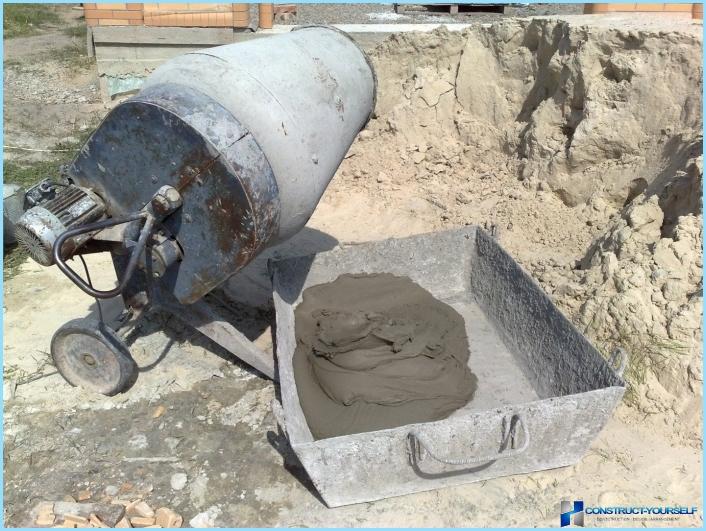
Mass for brick masonry is considered ready when the mixture becomes melted butter. At the end of the batch can proceed to the construction works, given that the shelf life of the mass is limited to 2 hours.
Consumption ↑
Before mixing the solution is very important correctly calculate its expenditure, the number of masonry. One square meter of masonry of a thickness of one brick requires about 75 liters of mixture. Clutches of one square meter with a thickness half brick requires about 115 liters of a mixture of.
Additionally ↑
All necessary calculations can be done independently without the involvement of specialists. For these purposes, you need to carefully read the above requirements is represented by the ratio of the components.
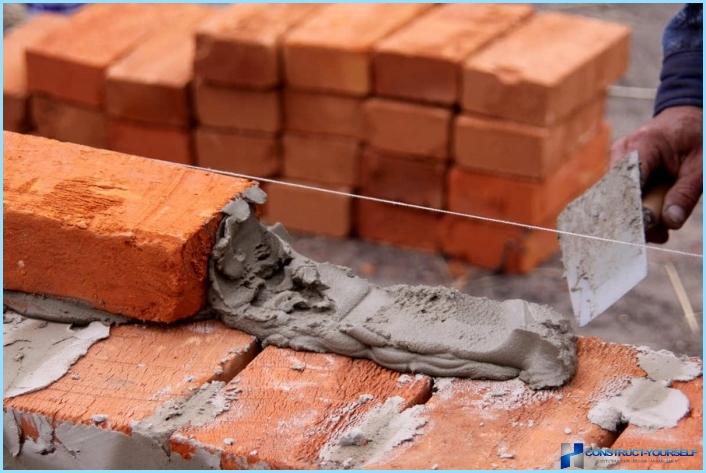
If in the process of mixing the solution of any problem, you should check on the suitability of all building materials. It is also recommended to refer to the instructions: how to make mortar for bricklaying.
In case of deviation from the norm, the materials must be replaced and re-knead the solution. Made from the correct mixture depends entirely on the strength and durability of the future building.
All materials and tools should be prepared in advance, before the start of the batch.
A small amount of the mixture can be done manually with the help of convenient container. If you want a large amount of building mass, it is recommended to use a cement mixer.

